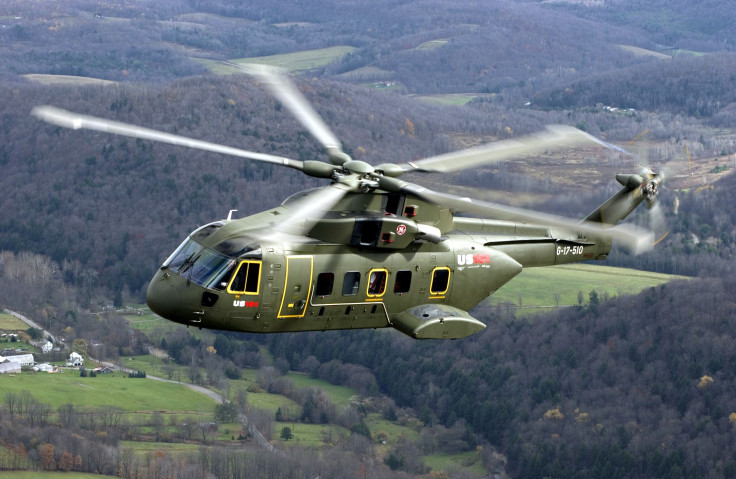A Lockheed/Boeing Futuristic Helicopter Prototype Is Delayed Again

A joint Boeing (NYSE:BA) and Lockheed Martin (NYSE:LMT) prototype looking to set the standard for future military helicopters has suffered another setback, pushing its first flight into 2019.
In February 2013, Boeing announced it was teaming with Sikorsky, then a subsidiary of United Technologies but now owned by Lockheed, to design and build a variant of the Sikorsky X2 rotorcraft for the U.S. Army's Joint Multi-Role Technology Demonstrator (JMR TD) program.
This article originally appeared in The Motley Fool
The companies initially had planned for the design, called the Defiant, to fly in 2017, but complications manufacturing the system's blades led to setbacks. Those issues have been resolved, and the companies had been pushing to do a first flight before year's end. But they said last week that recent tests had revealed issues that would lead to further delays.
"We are going to slip our first flight into early 2019," Rich Koucheravy, director of business development for future vertical lift at Sikorsky, said during a Dec. 12 call with reporters. "While it's not necessarily what a lot of folks would have liked -- it's not necessarily what we would have liked -- we continue to build confidence in our configuration."
A $100 billion long-term opportunity
The Boeing/Lockheed team has one of two designs, along with Textron's (NYSE:TXT) Bell V-280 Valor, competing for the Army's Future Vertical Lift program, an ambitious bid to rethink the design and function of a helicopter to make it faster, more stable, and able to haul large loads even in thin atmosphere or other extreme conditions.
The Textron Bell design, which is a tilt-rotor like its popular V-22 Osprey, achieved first flight in December 2017. The Defiant has more of a traditional helicopter look but with counter-rotating coaxial main rotor blades and a "pusher propeller" at the rear to increase airspeed and maneuverability.
While these initial designs will not immediately lead to a massive payday for the companies, the long-term stakes are high. The Army over the coming decades hopes to replace its massive fleet of UH-60 Black Hawk utility helicopters and AH-64 Apache attack helicopters using next-generation aircraft, and a successful demonstration now could position either of these designs for future contracts.
Overall, the Army could need as many as 4,000 medium-class helicopters at a projected price tag of $100 billion. The demonstrator effort will heavily influence the requirements for future Army rotorcraft procurements, and the winner of this competition will have a strong endorsement of its technology.
There's time to get it right
Lockheed Martin figures to be involved in the future of helicopters no matter how the demonstration plays out, having partnered with Bell on the Valor design before buying Sikorsky. But the promise of future contracts is why Lockheed spent $9 billion in 2015 to buy Sikorsky, and the company would certainly be eager to see its wholly owned unit succeed.
Textron, likewise, has a lot at stake with this demonstration, and is likely watching the Defiant's progress closely. The industrial conglomerate has stumbled in recent years due to a collapse in demand for its business jets and production issues with its recreational vehicles. While management expects both of those businesses to recover, defense is a key element to the Textron bull case, and the Valor is one of the cornerstones of Textron's defense push.
While the bulk of the procurement opportunity is still years away, there are some near-term competitions that could be affected if the Defiant can't get going. The Army in October released a request to the industry for its Future Attack Reconnaissance Aircraft (FARA), with plans to award design contracts in June 2019 and a flyoff planned for late 2022. Sikorsky has indicated it plans to scale the Defiant design to compete for the FARA.
The funding would be sparse initially, with participants set to receive $8.5 million in fiscal 2019 and $6.5 million in fiscal 2020. But the candidates selected for the flyoff would receive about $735 million apiece between fiscal 2020 and 2023.
For investors, the best advice is to sit tight but continue to monitor. Chances are, the Defiant team will get the details right and its helicopter airborne before too long, and the current delay will end up as only a footnote. Sikorsky, and Textron's Bell unit, are important components of the U.S. military's long-term rotorcraft strategy and will likely both have ample opportunities to grow in the years to come.
Still, you can bet there will be a huge sigh of relief coming out of Sikorsky when the Defiant finally flies.
The Motley Fool has a disclosure policy.




















